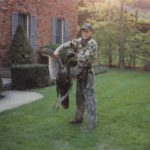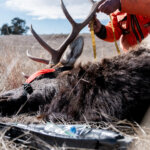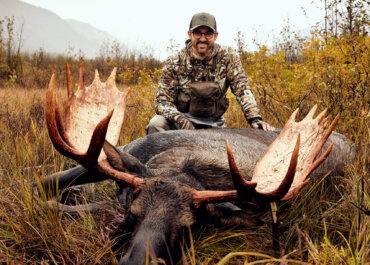This four part blog series features the adventures of WTA Client Earl Peterson, who recently traveled to Mongolia in search of Gobi Argali, Hangai Argali and Gobi Ibex.
PART 3 – MARAL STAG, MONGOLIAN WOLF & WHITE-TAILED GAZELLE
My hunt in Mongolia during this past July was a way, for me the “senior” hunter, to learn about the past and present of the ancient land of Genghis Khan. As a history major at university many years ago, I developed a keen interest of ancient cultures and their people. For me, this trip to Mongolia was more than a hunt. It was a way to understand Mongolia of the past and the people of Mongolia today. While Khan and his raiders were hunters out of necessity, we were now hunters in a land where, not many years ago, hunting was almost lost. For much of the 20th Century, Mongolia was a communist nation under Russian influence. During the early 1990’s all of that changed as people from the countries of the old Soviet empire faced communism’s collapse and the birth of a fledgling free market economy. The communist safety net was gone, and with it, many jobs were gone. Hungry people led to severe poaching and wildlife all across Mongolia was in severe decline. There are major efforts today, in Mongolia, to manage their wildlife resources by limiting hunting, re-building the herds and sharing the fees that trophy hunters bring to Mongolia. It is the same story we hear around the world—Hunters and the dollars they spend, are rescuing from near extinction the animals they hunt.
After taking my Gobi Argali and Hangai Argali earlier, we had an extra two days to explore the area where camp #2 was located. I had never seen a Maral Stag or a Mongolian Wolf but I sure wanted to. For the Maral Stag we were a couple of weeks early, so I did not have a permit, but we did have cameras. The Mongolian Wolf was a target, if I could find one.
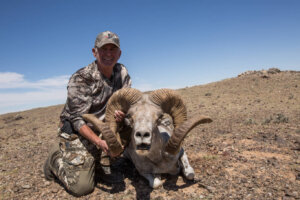
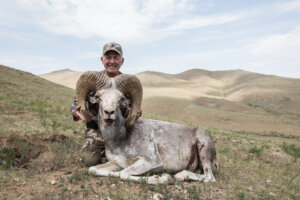
The Maral Stag is a member of the Wapiti family and males weigh in the mid 600 pound range and are reddish brown with a rump patch that is more reddish. Our guides told us the Maral Stags were almost completely eliminated from Mongolia during the 1990’s as poachers sold the antlers, velvet and testicles to China for use in traditional aphrodisiacs. Today, the government has limited hunting, encourage a re-birth of the herds and the dollars shared by hunters greatly assist the nomads.
We drove about two hours from camp #2 and were in a larger mountainous area with more brush and a few trees. I was hoping to see and photo a stag, or two, but we saw literally hundreds and hundreds in groups of 10 to 50 or more. The males were in full velvet and magnificent creatures. The Maral Stag is back. My friend and cameraman, Grant Boring got some great shots of the stags. In discussing, with my outfitter, TugSo, the costs of Maral Stag hunting, I was surprised on how reasonable it was. For my next trip to Mongolia, I am definitely having the consultants at WTA time my hunt so that I am there a bit later and can get a Maral Stag permit.
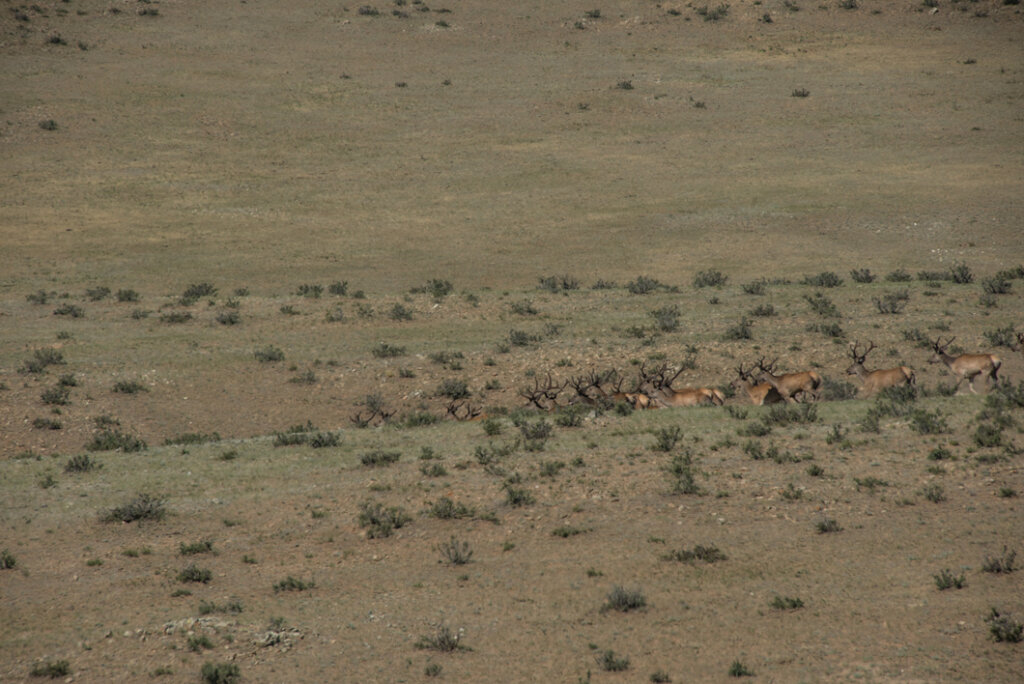
During our glassing and viewing of the stags, I carried my rifle, each time, as we left our Lexus 4×4 to go to viewing sites. I was looking for a Mongolian Wolf, which is a sub species of the grey wolf that is found in Mongolia, northern China and eastern Russia. The wolf is the main predator on the Argali, Ibex, Maral Stag and other animals on the Mongolian steppes. I had seen photos of the Mongolian Wolf and I saw the Jim Shockey show where he got his. The wolf had to be a trophy of opportunity as most hunters hear them in the distance but never see them.
It was mid-day and we made another stop to take photos of a herd of stags. I stepped out of the Lexus with my rifle and my outfitter told me to leave it as we were only walking a hundred feet to look over a mountain ledge. I did and you know what happened. We walked the hundred feet and started glassing; my outfitter decided to go another hundred feet around a corner and told me to wait for him. As he went out of site, a beautiful Mongolian Grey Wolf, hearing my outfitter and looking over his shoulder, slowly and quietly walked broadside down a trail less than 50 yards underneath me. I didn’t have a rifle. I didn’t have my camera. But, I did have my rare opportunity to see a Mongolian Wolf. Lesson learned again; always be ready. Later I will share another wolf story when we go after my Gobi Ibex.
Back at camp that night, we made a plan to go the next day after white-tail gazelle. We had seen them running all over the hilly/mountainous areas where we had been hunting for Argali. They looked awfully fast and never seemed to be moving at less than a full out run.
The Mongolian white-tailed gazelle is a medium sized antelope native to the Central Asian steppes of Mongolia. In the summer, the males are light brown, with pinkish tones, in color. True to their name, they have a white patch in the rump area. Males have lyre shaped horns and the white-tailed gazelle are estimated to have a Mongolian population of 1.2 million. Permits can be purchased through your outfitter and are very reasonable in cost.
While traveling through Mongolia, we usually saw the gazelle in groups of 20 to 30, but there are stories of much larger groups, including one about 10 years ago where the estimated group size was 250,000 animals. Seeing gazelle was not the issue. Getting a standing shot, within decent rifle range was.
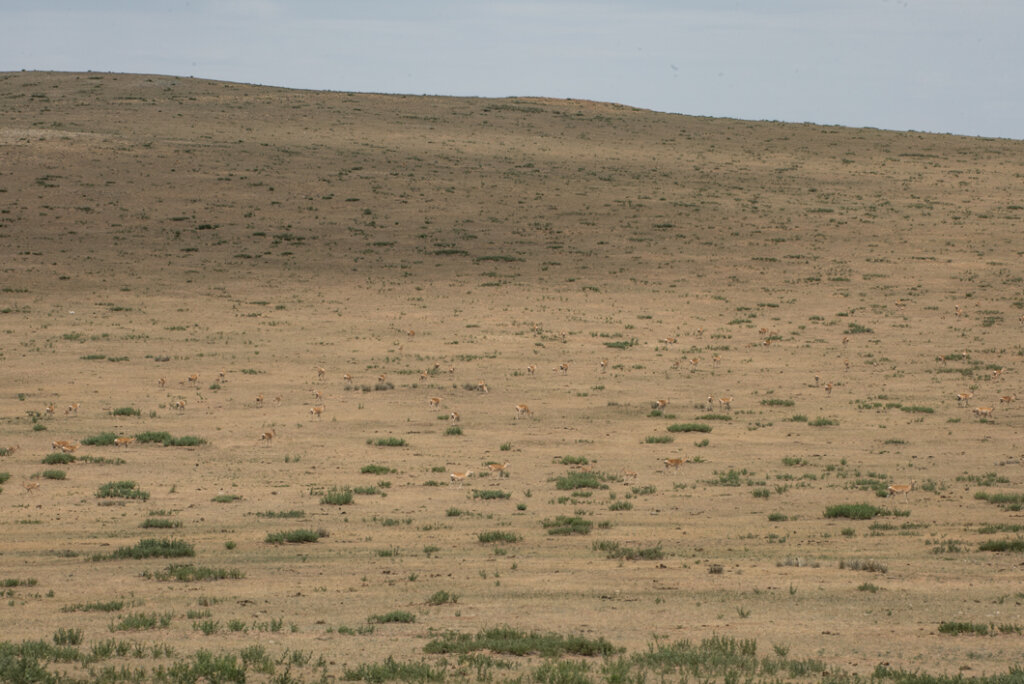
The tactic used by our scouts was to place the shooter in a concealed spot, preferably behind some large rocks. The scouts would then drive the hilly plains and gazelle, from more than a mile away, would see them and take off running. The concept worked but there was lot of area for them to run and we could only cover a very small portion of the hilly steppes. We spent the morning, in various concealed spots, seeing thousands of gazelle but not a single one was less than 500 yards or moving less than on a full bore run.
After a light lunch we set up again. We were behind some large boulders facing north. And, not as predicted, the gazelle came from the south. They angled in at a slow trot and I dropped mine, with an angling shot, at about 150 yards. The white-tail gazelle is a beautiful creature and as we found out later, makes a tasty meal. On a trip to Mongolia, an add-on gazelle hunt is a must.
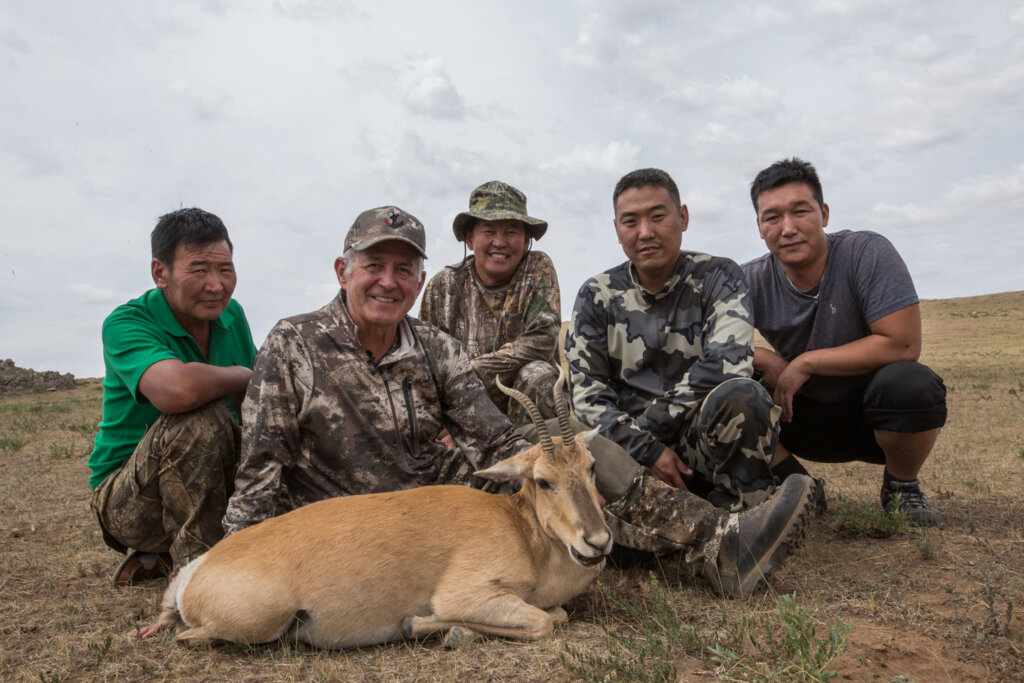
It was time to leave camp #2 and head due west to the central part of Mongolia is search of a Gobi Ibex. This was going to be a day plus ride over paved roads (with lots of pot holes), and 2 track paths. We would overnight in a hotel and reach camp late the following day. Mongolia is a really large country and driving from the east to the central portion is quite a trip. There were thousands of nomads, living in gers, watching their herds, all along the way.
And, the good news was that my son-in-law, Eric, had also scored with his Gobi and Hangai Argali and he would join us in camp #3. We looked forward to be together again and both of us were going to try for our Gobi Ibex.


